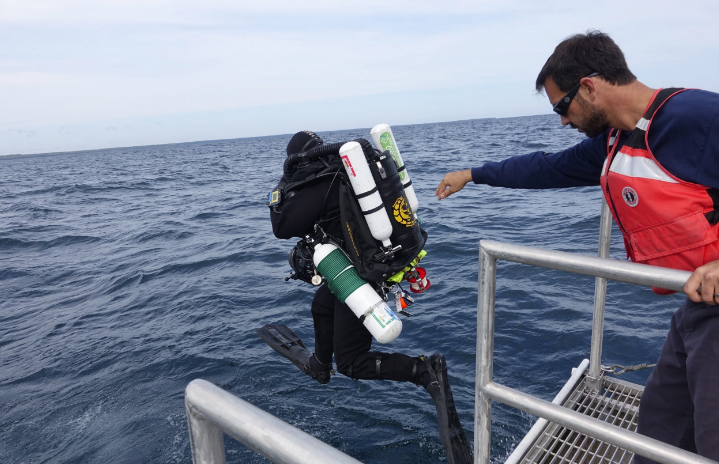
Location, Location, Location: Lake Huron Sinkhole Surprise
From the Nominator
"Science has long struggled to explain the factors controlling the gradual rise of atmospheric oxygen early in Earth's history—the phenomenon responsible for the spectacular diversity of life on our planet. Now, University of Michigan researchers believe they've found the answer in, of all places, a submerged sinkhole 80 feet below the Great Lakes' surface.
Seasoned reporters Jim Erickson and Mike Wood, a Michigan News writer and videographer, respectively, can't resist a swashbuckling adventure. They drove hours from Ann Arbor to Alpena, Mich., and boarded a National Oceanic and Atmospheric Administration vessel with scientists and scuba divers from the Thunder Bay National Marine Sanctuary. Their "high seas" journey netted Michigan News some dazzling underwater video, vivid photos, and wild tales about Lake Huron's "Sinkhole Surprise."
It seems the brightly colored bacteria that thrive in Lake Huron's Middle Island Sinkhole are good analogs for the single-celled organisms that formed mat-like colonies billions of years ago. These organisms were the first to capture energy from sunlight to produce organic compounds through photosynthesis, releasing oxygen as a byproduct. As the spinning of our infant planet slowed over time, the length of each day increased (from 6-24 hours). Longer days likely boosted the amount of oxygen released by photosynthetic cyanobacteria, researchers say. That finding points to a previously unconsidered link between Earth’s oxygenation history and its rotation rate.
Most scientists would froth at this revelation, published online Aug. 2, 2021, in Nature Geoscience. But how to captivate mainstream media with such an esoteric discovery?"
From the Judges
The photography and various voices moved this video along, helping the audience understand the importance of the topic and making it accessible.